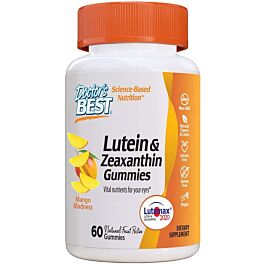Description
The body does not synthesize lutein on its own, so getting it into the body is associated with nutrition.
The substance lutein is a natural pigment belonging to the group of carotenoids. The highest concentration of lutein and its derivative, zeaxanthin, was found in the macula of the retina. The optimal amount of lutein and zeaxanthin in the retina is necessary for visual acuity and maintenance of visual function.
The main functions of lutein:
- acts as an optical filter, protecting the eye from ultraviolet rays,
- is responsible for visual acuity and increases sensitivity to light,
- is an effective prevention of dystrophic processes of the retina, cataracts,
- being an antioxidant, it does not allow free radicals to damage the most sensitive and vulnerable tissues.
- strengthens vision, making it sharper,
- helps maintain good vision even in old age.
Zeaxanthin is a yellow pigment from the xanthophylls group, belongs to oxygen-containing carotenoids, is an isomer of lutein. Contained in the chromoplasts of cells of corn grains and sea buckthorn fruits, as well as calendula flowers, it is found everywhere together with lutein. Synthesized by plants to absorb light and protect against damage from excessive UV rays.
The benefits of zeaxanthin for the human body:
- Protection of the macula of the eyes from age-related degeneration (increases the optical density of the macular pigment), reducing the risk of age-related blindness.
- Minimization of the destructive effect of free radicals on cell membranes.
- Protects eyes from harmful UV and blue rays (absorbs blue light, acts as inner sunglasses).
- Improving night vision and increasing visual acuity in general (promotes better contrast, reduced blind spots, recovery after bright light exposure).






Reviews
There are no reviews yet.